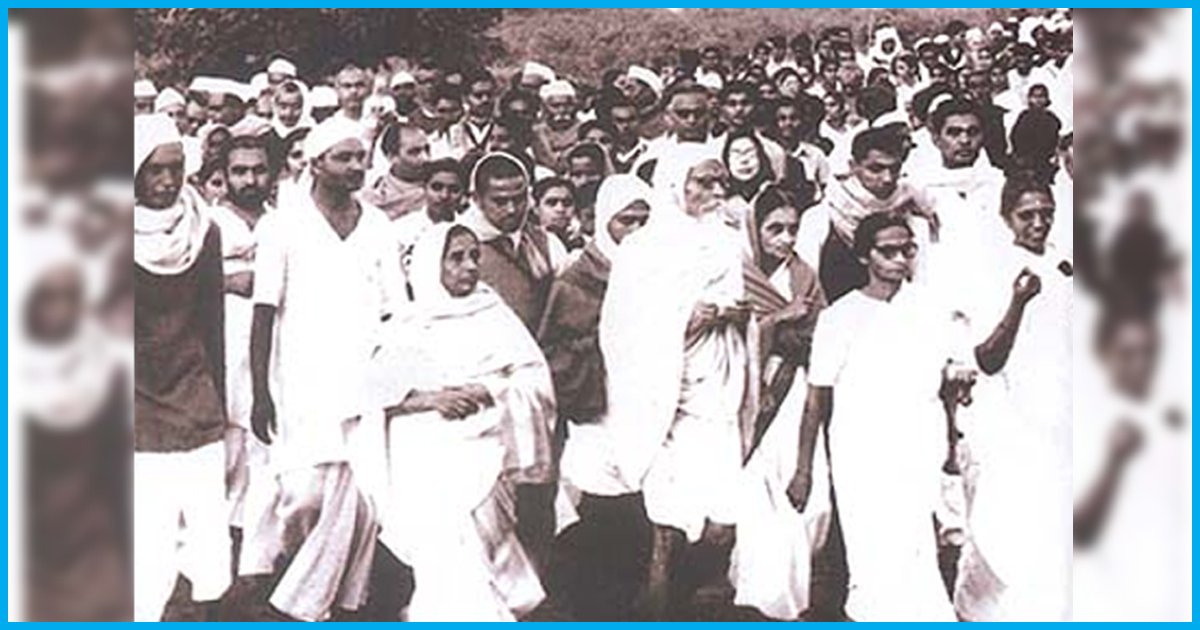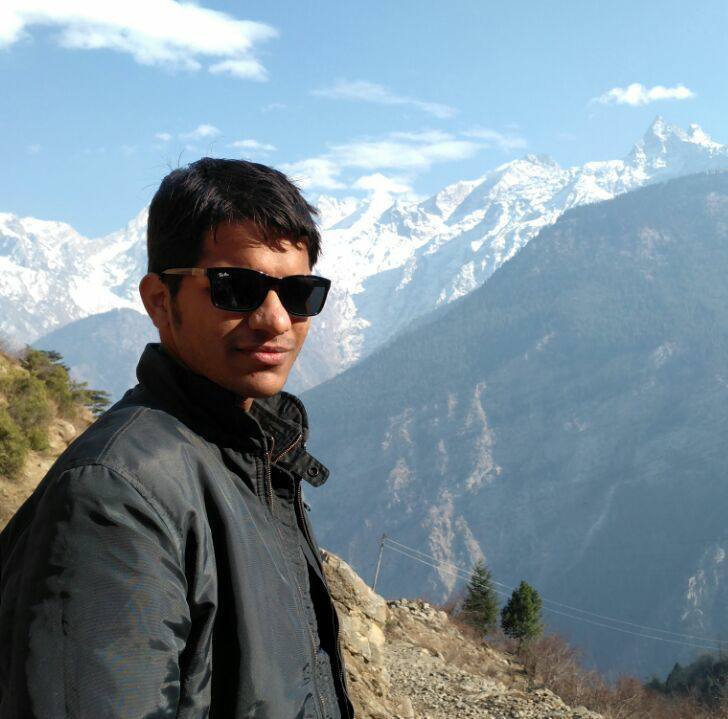
Shanti Sena – The Peace Force Which Tackled Riots Through Nonviolence
4 July 2017 12:42 PM GMT
Ever heard of a group of people using peace and nonviolence methods to fight riots and disturbances? This might be the need of the hour in many parts of the world!
The Idea
Shanti Sena – Mohandas Gandhi called for a peace army for national defense in 1942—a plan never tried, since the Japanese did not invade—the idea of Shanti Sena was usually linked to combating riots.
“Gandhi had invited a few hundred colleagues to come to his ashram and discuss organizing Shanti Sena. A month before the conference, Gandhi was assassinated and it was never held.”
But the idea was later revived by Vinoba Bhave, who in 1957 founded Shanti Sena to deal with riots in villages and the organisation was later led by Jayaprakash Narayan.
Most of these Shanti Sainiks—“peace soldiers”—were regular development workers from rural areas, who might take part in Shanti Sena actions when rioting broke out in nearby towns or cities. And though today the original Shanti Sena which at its peak had 6,000 members no longer exists as a formal organization, some individuals still engage in such actions under other banners.
Preventing and Combating Riots
As Narayan Desai (son of Gandhi’s personal secretary, Mahadev Desai) who was the General Secretary of the organisation spoke and is quoted below, Shanti Sainiks would intervene in riots in India and even work to prevent riots.
The first step for a group of Shanti Sainiks that had decided to intervene in a riot was a public announcement, through newspapers and possibly radio. This publicity helped ease the approach to various figures in the conflict. The announcement might also have included a brief, impartial statement on the issues, establishing the Sainiks’ nonpartisan stance. The Sainiks would arrive in the city over the course of the next few days. There might eventually have been 30 or more Sainiks working in a city. As they gathered, they divided into teams.
The first team met with leaders of the communities involved in the riot, as well as with other important figures. We presented ourselves not as saviors but as people eager to assist them in their difficulty. We gathered information from them and tried to understand their minds. And we tried to find the forces of peace on both sides. Often there were people who favoured peace but did not know how to work for it.
“In one city, we met with the top police officer and requested him not to fire on the rioting crowds. “He said, ‘You are the first group asking me not to resort to firing. But there is a lot of political pressure on me to do it. What can I do?’
“So we met with this important political leader who was pressuring him. We knew that this political leader loved the city, so we asked him, ‘Do you want the image of this city stained by blood?’ He had no reply. Then we offered an alternative: ‘You already have a curfew order in certain areas. Why not introduce it throughout the city?’ So he immediately phoned the police officer and said, ‘Instead of firing on the crowds, let’s have a curfew order.’ The officer was very happy to hear it.
Working Across Communities
Sometimes the Sainiks would persuade leaders of opposing communities to call publicly for an end to violence, or to meet with leaders of the other side to begin talks. “We tried to organize some of these leaders into a peace committee. If the fighting wass between Hindus and Muslims, we asked the Hindu community to suggest Muslim names for the committee, and vice versa.
“This was often very difficult, because tensions could be very high. But once, say, the Hindus found out that the Muslims have given some Hindu names, they started thinking, yes, maybe they also can find names of some Muslims. And that created joint committees in situations where people would not imagine that Hindus and Muslims could work together.”
Most of the Sainik teams would patrol areas of likely violence. The patrols talked to people on the street, and even in their houses, to find out what was on their minds and to convince them of the need to restore peace. Their presence alone also discouraged violence.
“In one place in the city of Baroda we came upon a huge pile of rocks. So we asked the people standing there what the rocks were for. They said, ‘These are country-made bombs. We’ll use them at the proper time’—meaning, when there was a lone policeman or sentry going around. So we said, ‘We guess you’ll have to use them on us instead.’
“Some of them were angry, but others thought about it and said they would find a better place. They thought, this wasn’t the right place because there was somebody watching. But there was ‘somebody watching’ all over the city.” Though there weren’t that many Sainiks in the city, only downtown areas were affected by the rioting, and the Sainik teams had stationed themselves at all the crucial spots. Other times, when their numbers were even fewer, teams moved from spot to spot.
But sometimes the Sainiks could not prevent violence through their presence or persuasion. In those cases, they blocked it with their bodies. Dressed in their distinctive uniforms, they rushed among the rioters, exhorting them or shouting peace slogans.
Very often we faced rock-throwing from both sides—or rock-throwing from one side and batons or tear gas shells from the other, if government forces were involved. Women participated in this direct intervention as well as men. In fact, they were more successful at it, because they were less likely to be attacked.
Fighting Rumours and Fake News
One team of Sainiks might have had the special job of fighting rumors.
“Rumors are one of the chief causes of violence in riots. When people are afraid, they tend to believe almost anything they hear. Figures get exaggerated. A story could grow until people think a thousand people have been killed on the other side of town, when nobody has been killed at all.
“Sometimes too there is a deliberate effort to create rumors.” The Sainiks had known groups of troublemakers to travel around a city for hours spreading false stories.
Such stories had sometimes been spread by the media as well. “In the city of Ahmedabad, one of the most widely read newspapers had a banner headline saying, ‘Woman’s breasts cut off in such and such location.’ The newspaper did not say directly that member of Hindu/Muslim religion had cut off the breasts of a Muslim/Hindu, but did so indirectly, because everyone knew that the mentioned area had a strong Hindu/Muslim population.
“The supposedly oppressed community was infuriated and result in mass bloodshed. “The next morning, in the same newspaper, on the fifth page, in a small corner, you might be able to see an apology saying that that news had been untrue.
“The best way to fight rumors is to give correct, unbiased information. We immediately went to the place mentioned to check the facts. We had the advantage in this, because very often Shanti Sena was the only group moving within both communities. So, when there was a rumor such as, ‘In the Hindu/Muslim area, they are gathering weapons,’ we say, ‘Have you been there? We slept there last night. And we know that nothing of the sort is happening.’
“Usually Shanti Sena did not have access to radio or the newspapers, so used alternative means to spread our information. We used megaphones, or hand out leaflets, or posted messages on the neighbourhood blackboards that some of our cities had.” Both rumors and violence multiply where there is fear, so Shanti Sena worked hard to counter it.
“Fear and courage are equally contagious. So Shanti Sainiks often go to areas that are supposed to be dangerous to show that there is nothing to fear. “For example, in Bhivandi, when we met with the Muslims/Hindus, they said, Why talk to us about peace? Why don’t you try to go to the Hindu/Muslim part of the city? The minute you go there, you’ll be killed!
“So we said, ‘All right, we’ll go lodge there.’ Then we went and lived with the Hindus/Muslims. The Muslims/Hindus of that city were amazed. They could never have imagined that a mostly Hindu/Muslim group, including women, could stay with the Muslims/Hindus overnight and be alive the next morning. But we were all safe. Not only were we safe, but the other religions thought they were safe, because they had Shanti Sainiks from other religion protecting them.
“In Calcutta in 1964, we organized a silent procession of 3,000 people through the streets where there had been violence. This is one of the most effective techniques to fight fear. On all the streets, just as we passed by, the closed shops were thrown open, and the shop owners would say, ‘Ah, we are safe now that Shanti Sena has come.’ Wherever Shanti Sena functioned, it created this atmosphere of trust.
As violence subsided, the Sainiks shifted their focus to reconstruction efforts. This often became another means to reconcile the opposing communities. In the state of Orissa, there was a riot in which the Muslims/Christians burned down the homes of the Christians/Muslims. Shanti Sainiks there persuaded the Christian/Muslim community to donate funds for rebuilding the Muslim/Christian houses. Some of the people who contributed were some of the ones who had burned them down!
Shanti Sena Today
Today there are some Shanti Sena’s/peacekeeping forces which are organised by the government, although not connected to the original Shanti Sena. There are also some groups which have used the name Shanti Sena to achieve their objectives through violent means. The original Shanti Sena and its members were neutral, nonpartisan and worked with all the parties including the government and completely nonviolent in their methods. Whilst the original Shanti Sena does not exist anymore, it inspired many other organisations working in a similar domain such as Peace Brigades International.
The original article appeared in the link here and as appears in his book ‘Gandhi Today’ by Mark Shepard. This article is an abridged form reproduced by Rohit Parakh with Mark Shepard’s permission. Rohit can be reached at [email protected]
For those interested in learning more about Shanti Sena can go to this link
 All section
All section













